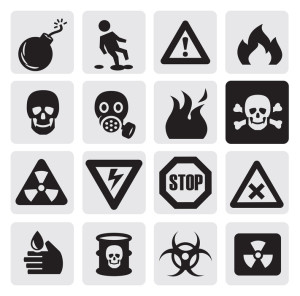 When you think about the “Fourth of July”, a few things come to mind like picnics, grilling and watching the fireworks with the kids. Unfortunately, this year’s fireworks display in Simi Valley, CA turned awry as multiple fireworks canisters went off too close to the ground causing explosions and debris to be shot at nearby spectators. The present count of the persons who were injured stands at thirty nine. (See ABC News Footage ). Our thoughts and prayers go out to the victims and their families. In that there was a similar mishap at last year’s pyrotechnics display near San Diego, CA, I wanted to explore the legal issues associated with these types of incidents.
When you think about the “Fourth of July”, a few things come to mind like picnics, grilling and watching the fireworks with the kids. Unfortunately, this year’s fireworks display in Simi Valley, CA turned awry as multiple fireworks canisters went off too close to the ground causing explosions and debris to be shot at nearby spectators. The present count of the persons who were injured stands at thirty nine. (See ABC News Footage ). Our thoughts and prayers go out to the victims and their families. In that there was a similar mishap at last year’s pyrotechnics display near San Diego, CA, I wanted to explore the legal issues associated with these types of incidents.
The legal issues presented by these and other similar incidents involving fireworks malfunction are what constitutes negligence and what legal standard applies. A related issue is whether the standard for negligence differs between the various “players” in these types of displays including the manufacturer of the fireworks, the pyrotechnic professionals hired to launch the fireworks and the entity who sponsors or sets up the event.
California, like many other states, defines “negligence” as an injury or damage caused by a lack of “ordinary care.” However, like many jurisdictions, California holds persons engaging in “dangerous activities” to a higher standard of having to use “extreme caution.” For example, in the case of Warner v. Santa Catalina Island Company, 44 Cal.2d 310, 317, the owner of a shooting gallery was held to this higher standard when bullets malfunctioned and injured a patron. The court reasoned that operation of a business involving explosive materials like bullets required a higher duty to inspect and test the ammunition for close range shooting prior to distributing it for use. Therefore, it would appear that the persons responsible for setting up the launch and ignition of fireworks may also be held to this standard of “extreme care.” As stated by the California Supreme Court, “the care required must be in proportion to the danger to be avoided and the consequences that might reasonably be anticipated”.
 Numerous California law firms have already filed a series of coordinated lawsuits, on behalf of some of the victims of California’s largest-ever wildfire, the Butte County Camp Fire.
Numerous California law firms have already filed a series of coordinated lawsuits, on behalf of some of the victims of California’s largest-ever wildfire, the Butte County Camp Fire. California Accident Attorneys Blog
California Accident Attorneys Blog


 Working on a gas line is an extremely dangerous job. These individuals who choose to do so for the sake of supporting their families are putting their lives on the line each and every day. Unfortunately, there are instances where some don’t make it back home to their loved ones. However, it isn’t just the people who choose to work on the pipelines who are at risk of getting injured. Residential customers can also be at risk if the pipeline doesn’t do its job to make sure their pipelines are safe.
Working on a gas line is an extremely dangerous job. These individuals who choose to do so for the sake of supporting their families are putting their lives on the line each and every day. Unfortunately, there are instances where some don’t make it back home to their loved ones. However, it isn’t just the people who choose to work on the pipelines who are at risk of getting injured. Residential customers can also be at risk if the pipeline doesn’t do its job to make sure their pipelines are safe.
 When you think about the “Fourth of July”, a few things come to mind like picnics, grilling and watching the fireworks with the kids. Unfortunately, this year’s fireworks display in Simi Valley, CA turned awry as multiple fireworks canisters went off too close to the ground causing explosions and debris to be shot at nearby spectators. The present count of the persons who were injured stands at thirty nine. (See
When you think about the “Fourth of July”, a few things come to mind like picnics, grilling and watching the fireworks with the kids. Unfortunately, this year’s fireworks display in Simi Valley, CA turned awry as multiple fireworks canisters went off too close to the ground causing explosions and debris to be shot at nearby spectators. The present count of the persons who were injured stands at thirty nine. (See